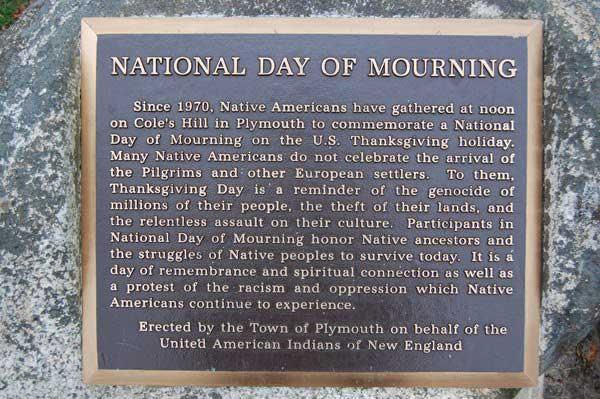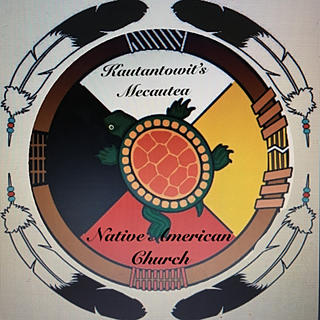The truth about Thanksgiving
- kautantowitmecautea
- Nov 22, 2017
- 5 min read
The story began in 1614 when a band of English explorers sailed home to England with a ship full of Patuxet Indians bound for slavery. In 1620, the pilgrims who had fled from England most often because they were either outcasts or fugitives, or both, claiming that due to religious persecution they arrived on the east coast of today's "America" where they met the Wananpoag people who lived in the area and were as “friends” to them and lived in “peaceful harmony” for 40 years since their arrival to our homeland. Within two days of being here, they found themselves having to receive assistance from the local Wampanoag Indian tribe as they had absolutely no idea about the land or how to survive upon it.I n 1621 Massasoit, the chief of the Wampanoags, signed a "treaty of friendship" giving the English permission to occupy 12,000 acres of land.
In 1621 the myth of thanksgiving was born. The colonists invited Massasoit, chief of the Wampanoags, to their first feast as a follow up to their recent land deal. Massasoit in turn invited 90 of his men, much to the chagrin of the colonists. Two years later the English invited a number of tribes to a feast "symbolizing eternal friendship." The English offered food and drink, and two hundred Indians dropped dead from unknown poison.
This is best illustrated in the written text of the Thanksgiving sermon delivered at Plymouth in 1623 by "Mather the Elder." In it, Mather the Elder gave special thanks to God for the devastating plague of smallpox which wiped out the majority of the Wampanoag Indians who had been their benefactors. He praised God for destroying "chiefly young men and children, the very seeds of increase, thus clearing the forests to make way for a better growth"
The first day of thanksgiving took place in 1637 amidst the war against the Pequots. 700 men, women, and children of the Pequot tribe were gathered for their annual green corn dance on what is now Groton, Connecticut. Dutch and English mercenaries surrounded the camp and proceeded to shoot, stab, butcher and burn alive all 700 people. The next day the Massachusetts Bay Colony held a feast in celebration and the governor declared "a day of thanksgiving." Natives were scalped, burned, mutilated and sold into slavery, and a feast was held in celebration every time a successful massacre took place.
Back then, the Churches of Manhattan announced a day of "thanksgiving" to celebrate victory over the "heathen savages," and many celebrated by kicking the severed heads of Pequot people through the streets like soccer balls. As if this wasn't horrific enough, the pilgrims stole their stored crops, dug up graves for dishes and pots, and took many native people as prisoners and forced them to teach crop planting and survival techniques to the colonists in their new environment.
The proclamation of 1676 announced the first national day of thanksgiving with the onset of the Wampanoag war, the very people who helped the original colonists survive on their arrival. It was on June 20th, 1676 Edward Rawson was unanimously voted by the governing council of Charlestown, Massachusetts, to proclaim June 29th as the first day of thanksgiving. The proclamation reads in part: "The Holy God having by a long and Continual Series of his Afflictive dispensations in and by the present War with the Heathen Natives of this land, written and brought to pass bitter things against his own Covenant people in this wilderness, yet so that we evidently discern that in the midst of his judgments he hath remembered mercy The council has thought meet to appoint and set apart the 29th day of this instant June, as a day of solemn Thanksgiving and praise to God for such his Goodness and Favor"
The United States entered into nearly 400 treaties with Indian tribes between 1783 and 1871 (when Congress ended treaty-making with the Indians), during a time when tribes were very powerful. Every treaty has been broken by the government since and today the tribes remain oppressed to the point of near extinction - coincidence? We don't think so!
In addition to taking "Indian land", the federal government, during the latter part of the 1800's encouraged social reformers and missionaries to remove Indian children from their reservation homes and place them in boarding schools (sometimes thousands of miles away), where their Indian culture was literally beaten out of them.
Many do not know that in 1863 , it was none other than George Washington finally suggested that only one day of Thanksgiving per year be set aside instead of celebrating each and every massacre. Abraham Lincoln officially declared and set forth to this day. At the time, two days were announced as days to give thanks, the first was a celebration of the victory at Gettysburg on August 6th, and the second one became the Thursday in November that we know now. Also in 1863 Pequot Indian Minister William Apess urged "every man of color" to mourn the day of the landing, and bury Plymouth Rock in protest.
Treaty abrogations were approved by US Supreme Court in the case of Lone Wolf v. Hitchcock, which decided in 1903, involved an 1867 treaty in which Congress guaranteed the Kiowa and Comanche Tribes that no additional land would be taken from their reservation unless the tribes gave their express consent. Several years later, the federal government took additional land despite opposition from the tribes. The Supreme Court held that Congress has “plenary power” (full and complete authority) over the Indians and can break a treaty essentially whenever it wishes. In 1924 the government "allowed" the tribal members left alive after their holicost and genocide to petition to be declared "Native american citizens" and ultimately in 1970 Apess got his way, as you will see below in the picture. 1970 was the "350th" anniversary of thanksgiving, and became the first proclaimed national day of mourning for American Indians.

"Today is a time of celebrating for you but it is not a time of celebrating for me. It is with heavy heart that I look back upon what happened to my people The pilgrims had hardly explored the shores of Cape Cod before they had robbed the graves of my ancestors, and stolen their corn, wheat, and beans Massasoit, the great leader of the Wampanoag, knew these facts; yet he and his people welcomed and befriended the settlers, little knowing that before 50 years were to pass, the Wampanoags and other Indians living near the settlers would be killed by their guns or dead from diseases that we caught from them Although our way of life is almost gone and our language is almost extinct, we the Wampanoags still walk the lands of Massachusetts. What has happened cannot be changed, but today we work toward a better America, a more Indian America where people and nature once again are important." ~Frank B. James, President of the federated Eastern Indian League said in a final speech before he was no longer allowed to publicly speak because of that speech.
As always, we Thank you or your continued interest, contributions and support and we Hope you stay tuned. Blessings to all, go in a goo way~






Comments